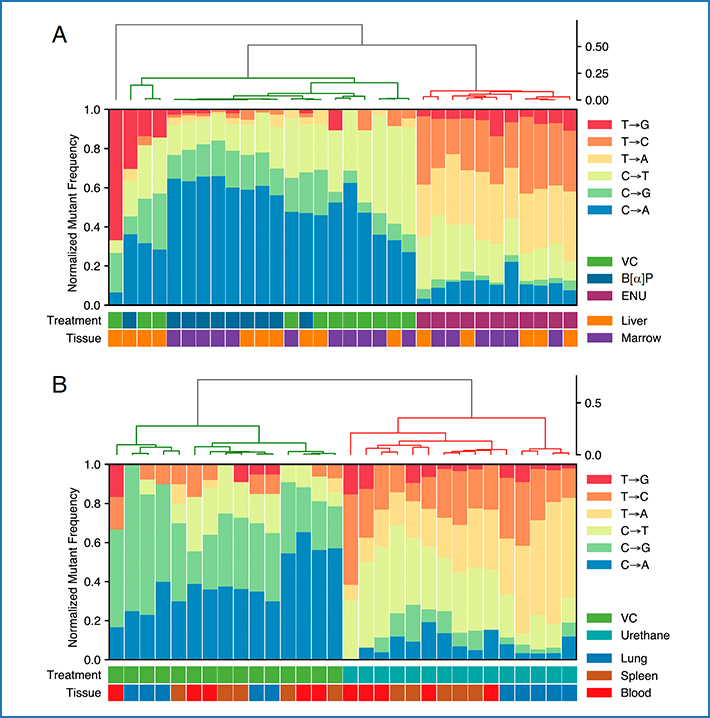Molecular origins of mutational spectra produced by the environmental carcinogen N-nitrosodimethylamine and SN1 chemotherapeutic agent
Detection of DNA replication errors and 8-oxo-dGTP-mediated mutations in E. coli by Duplex DNA Sequencing
Error-corrected next-generation sequencing to advance nonclinical genotoxicity and carcinogenicity testing

Error-corrected next-generation sequencing (ecNGS) is an emerging technology with the potential to revolutionize the field of genetic toxicology. Here, we present recommendations from an expert working group convened to discuss potential applications, advantages and challenges associated with implementing ecNGS in nonclinical safety studies.
DNA damage and somatic mutations in mammalian cells after irradiation with a nail polish dryer

Ultraviolet A light is commonly emitted by UV-nail polish dryers with recent reports suggesting that long-term use may increase the risk for developing skin cancer. However, the effect of radiation emitted by UV-nail polish dryers on the physiology and mutagenesis of mammalian cells remains unclear. Here, we show that irradiation by a UV-nail polish dryer […]
Duplex sequencing identifies genomic features that determine susceptibility to benzo(a)pyrene-induced in vivo mutations

Exposure to environmental mutagens increases the risk of cancer and genetic disorders. We used Duplex Sequencing (DS), a high-accuracy error-corrected sequencing technology, to analyze mutation induction across twenty 2.4 kb intergenic and genic targets in the bone marrow of MutaMouse males exposed to benzo(a)pyrene (BaP), a widespread environmental pollutant. DS revealed a linear dose-related induction of […]
Genetic toxicity testing using human in vitro organotypic airway cultures: Assessing DNA damage with the CometChip and mutagenesis by Duplex Sequencing

The organotypic human air-liquid-interface (ALI) airway tissue model has been used as an in vitro cell culture system for evaluating the toxicity of inhaled substances. ALI airway cultures are highly differentiated, which has made it challenging to evaluate genetic toxicology endpoints. In the current study, we assayed DNA damage with the high-throughput CometChip assay and […]
Direct Quantification of In Vivo Mutagenesis and Carcinogenesis Using Duplex Sequencing

The ability to accurately measure mutations is critical for basic research and identifying potential drug and chemical carcinogens. Current methods for in vivo quantification of mutagenesis are limited because they rely on transgenic rodent systems that are low-throughput, expensive, prolonged, and do not fully represent other species such as humans. Next-generation sequencing (NGS) is a […]
Ultra-accurate Duplex Sequencing for the assessment of pretreatment ABL1 kinase domain mutations in Ph+ ALL
Next-Generation Genotoxicology: Using Modern Sequencing Technologies to Assess Somatic Mutagenesis and Cancer Risk

Mutations have a profound effect on human health, particularly through an increased risk of carcinogenesis and genetic disease. The strong correlation between mutagenesis and carcinogenesis has been a driving force behind genotoxicity research for more than 50 years. The stochastic and infrequent nature of mutagenesis makes it challenging to observe and to study. Indeed, decades […]
